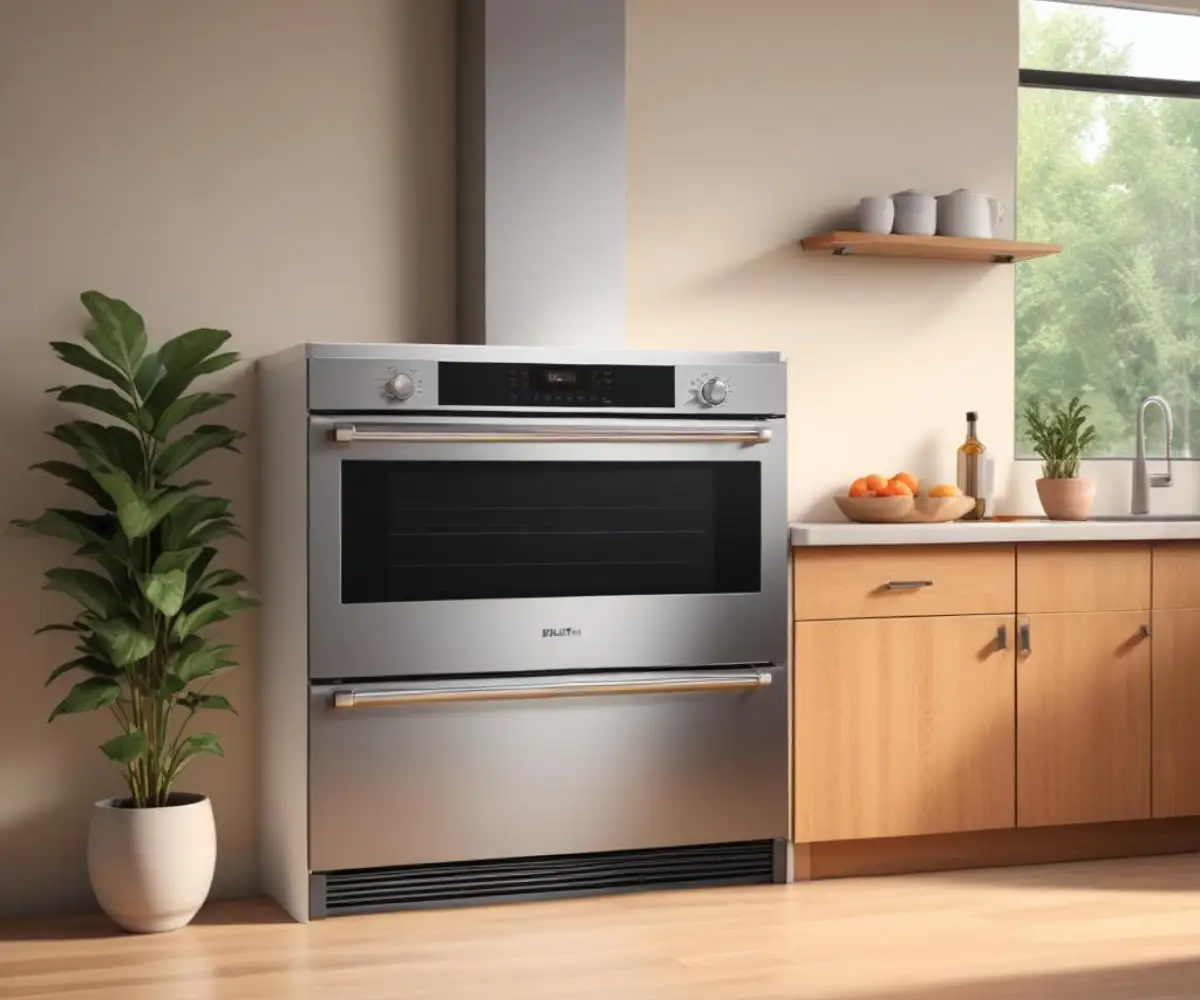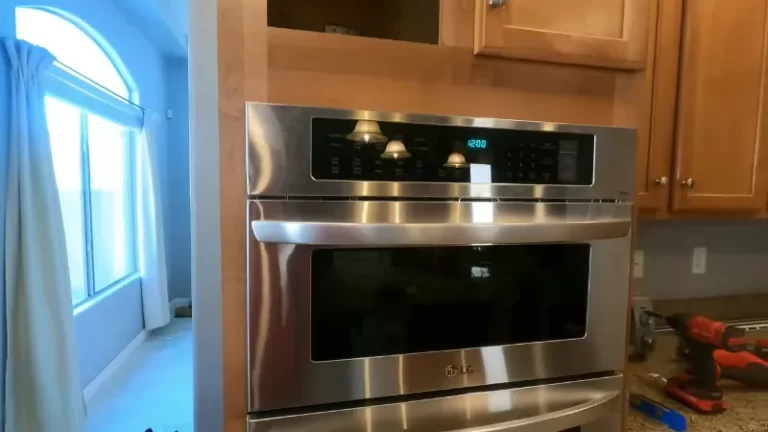Vented Oven Problems? Your #1 Guide to a Smoke-Free Kitchen
You planned the perfect meal. The ingredients are prepped, the oven is preheating, but as soon as you open the door, a wave of smoke billows out, triggering the smoke alarm and filling your home with unpleasant odors. This frustrating scenario is a common problem that points directly to an often-misunderstood hero of the kitchen: the vented oven.
Understanding how your oven ventilation works is the first step toward solving these smoky situations for good. Every oven, whether gas or electric, is designed to release heat, steam, and fumes generated during cooking. Without a proper way for these elements to escape, you end up with a kitchen full of smoke, lingering smells, and potentially damaged cabinetry.
You'll Learn About
What Is a Vented Oven and Why Does It Matter?
At its core, every oven must be vented. The crucial distinction lies in how and where it vents. The vast majority of residential ovens, especially electric wall ovens, feature an internal ventilation system. These ovens pull air through a cooling fan and release it back into the kitchen, usually through a small slot located below the door or under the control panel.
These models do not require ductwork leading to the outside of your home. Instead, they rely on the kitchen’s overall ventilation—like a range hood or an open window—to clear the air. A common misconception is that all wall ovens need to be vented externally, but this is rarely the case for standard electric models.
The Hidden Dangers of Poor Oven Ventilation
When your oven’s venting system isn’t working optimally, or if your kitchen lacks adequate airflow, a host of problems can arise. These issues go beyond simple annoyance and can impact your home and health. Ignoring them can lead to persistent problems that are difficult and costly to fix.
One of the most immediate consequences is constantly triggering smoke alarms, even when food isn’t burning. Over time, grease and microscopic food particles expelled from the oven vent can accumulate on your cabinets and ceiling, creating a sticky, hard-to-clean film. For gas ovens, improper ventilation can even pose a risk of releasing harmful byproducts like carbon monoxide into your home.
Is Your Oven a Front-Venting or Specialized Model?
Identifying your oven’s ventilation type is key to troubleshooting problems. Most modern electric wall ovens are front-venting. After 2007, manufacturers shifted to placing the vent below the oven door. This design improves the door seal and helps keep the electronic control panel cool by directing hot air away from it.
If you have an older oven, the vent might be located just under the control panel. In contrast, some high-end ranges or specialized cooktops might feature downdraft or rear-venting systems. These are less common and require dedicated ductwork that runs through the floor or walls to exhaust air outside, working much like a powerful range hood.

The critical takeaway is that for front-venting models, the air is released directly into your kitchen. This makes complementary ventilation, such as an effective range hood, absolutely essential for maintaining good air quality. Without it, you are simply recirculating smoke, steam, and odors throughout the room.
Solving Common Vented Oven Problems: Your Action Plan
Tackling oven ventilation issues often comes down to a few key areas: cleanliness, proper use, and ensuring associated systems are working correctly. By following a structured approach, you can systematically eliminate the cause of your smoky kitchen woes.
Problem: The Smoke Alarm Goes Off Constantly
This is perhaps the most disruptive oven problem. The primary cause is often not a malfunction but the burning of food residue. Even if your oven looks clean, tiny splatters of grease on the interior walls or heating elements can smoke at high temperatures.
First, perform a deep cleaning of your oven’s interior, paying special attention to the ceiling (broiler element area) and floor. If the smoking persists even after cleaning, chemical residue from oven cleaners could be the culprit. Wipe the interior with a 50/50 solution of water and vinegar to neutralize and remove any remaining cleaning agents.
Problem: Lingering Food Odors and Greasy Film on Cabinets
When food smells hang around for hours after cooking, it’s a clear sign of inadequate air circulation. The microscopic grease particles released from the oven vent are settling on nearby surfaces instead of being removed from the room. The solution here is two-fold: prevention and improved ventilation.
To prevent excessive smoke and grease, use cookware with higher sides or splatter screens when roasting. More importantly, always use your range hood fan when the oven is on. For best results, turn the hood on a few minutes before you start preheating and leave it running for about 15 minutes after you turn the oven off. This creates an airflow pattern that captures fumes as they are released.
Problem: Heat from the Vent is Damaging Cabinets
The hot air released from your oven’s front vent can cause significant damage to surrounding cabinetry over time, leading to peeling paint, warped finishes, or discoloration. This issue is almost always related to improper installation. Ovens require a specific amount of clearance—an air gap—between the unit and the cabinet enclosure to allow for proper airflow and heat dissipation.
Consult your oven’s installation manual to verify the required clearances. If your oven was installed too tightly, it can’t cool itself effectively, forcing hotter air out of the front vent. This is a critical consideration, especially when dealing with a wall oven under a cooktop, where space is often limited and proper airflow is paramount.
Choosing the Right Oven: A Ventilation-Focused Buyer’s Guide
When in the market for a new oven, thinking about ventilation from the start can save you a lot of trouble later. The type of ventilation system that is best for you depends on your kitchen layout, cooking style, and budget. High-end brands often offer different features, and understanding them is key; a detailed Bertazzoni vs Bosch comparison, for example, might reveal differences in their cooling fan efficiency and vent designs.
For most kitchens, a standard front-venting wall oven paired with a powerful, ducted range hood is the most effective and common setup. However, for kitchen islands or minimalist designs where an overhead hood is not desired, a downdraft system might be an attractive alternative.
| Feature | Front-Venting System (Standard Oven) | Downdraft/Rear-Venting System |
|---|---|---|
| Installation Complexity | Simple; no external ducting required for the oven itself. | Complex; requires ductwork through floor or walls to the exterior. |
| Kitchen Layout Impact | Minimal impact; requires a powerful range hood for best results. | Ideal for islands and open-concept layouts; eliminates need for overhead hood. |
| Ventilation Effectiveness | Good to excellent, but highly dependent on a separate range hood. | Fair to good; struggles against the natural rise of heat and steam. |
| Cost | Lower appliance cost; overall cost depends on range hood choice. | Higher initial appliance and installation cost due to ducting. |
| Best For | Virtually all standard kitchen layouts with wall or range ovens. | Kitchen islands or designs where unobstructed sightlines are a priority. |
The Unspoken Rules of Vented Oven Maintenance
Beyond routine cleaning, proactive maintenance of your oven’s ventilation components is essential for long-term performance. The cooling fan is the heart of the system, and if it becomes clogged or fails, your oven can overheat, leading to malfunctions or cabinet damage. Periodically, you should inspect the area around the fan for dust and debris buildup.
Listen for any unusual noises from the fan, such as grinding or rattling, as this can be an early sign of motor failure. Ensuring the door gasket creates a tight seal is also crucial. If the seal is worn or damaged, hot air and fumes can escape from around the door instead of being properly channeled through the vent.
Sometimes a small obstruction can cause major issues. Just as a tiny drill bit stuck in a wall can halt a project, a bit of fallen aluminum foil blocking the fan can disrupt your oven’s entire cooling system. Regular visual inspections can help you catch these small problems before they escalate.
Achieving a Perfectly Vented, Hassle-Free Kitchen
A vented oven should work with you, not against you. By understanding that most ovens vent directly into the room, the importance of a clean appliance and a high-quality range hood becomes crystal clear. Smoke, odors, and excessive heat are not problems you have to live with.
By diagnosing your specific issue—whether it’s baked-on grease, improper installation, or an underperforming range hood—you can take targeted steps to solve it. A well-ventilated kitchen is a cleaner, safer, and more enjoyable space for creating meals and memories.

